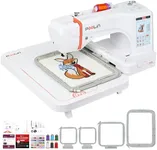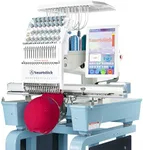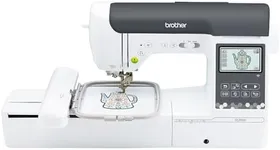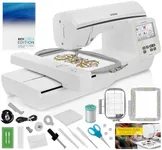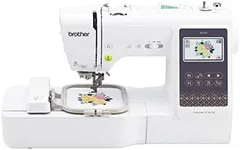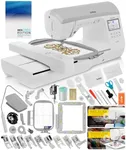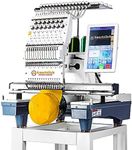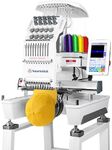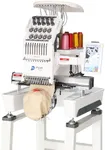Buying Guide for the Best Embroidery Machines
Choosing an embroidery machine can be a bit overwhelming, especially with so many options out there. The key is to focus on your needs and what you plan to create. Are you a hobbyist who wants to make personalized gifts, or are you planning to turn a creative hobby into a business? Think about the kinds of projects you’ll most likely work on, as well as the types of fabrics and designs that excite you. The right embroidery machine should match your ambitions while staying easy enough to use as you learn and grow. By understanding the essential features, you’ll be able to select a machine that supports your creativity and skill development.Embroidery Area SizeThe embroidery area size is the maximum space the machine can stitch in a single hooping. This matters because it determines how large your designs can be. Smaller machines may only handle patches or small logos, while larger area sizes allow for big designs on jackets or quilt blocks. Small areas (under 4x4 inches) are great for monogramming and small crafts, medium (4x4 to 6x10 inches) works for most personalized gifts, and large (over 6x10 inches) is for serious crafters or business use. Pick an embroidery area that matches the typical size of your projects to avoid unnecessary re-hooping or stitching in multiple steps.
Number of Built-in DesignsMany embroidery machines come with built-in designs, which you can use right away without sourcing new ones. More built-in designs mean more creative options out of the box. Machines may offer a handful to hundreds of patterns. While the quantity isn’t everything, consider how often you want to download or buy new designs. If you like experimenting or want variety, a larger selection can save time and help you try new things. If you’re planning to create mostly custom or downloaded designs, this number may be less important.
Connectivity and File Transfer OptionsConnectivity refers to how you get new designs onto your embroidery machine. Basic machines may only use built-in designs, while others let you transfer files via USB, Wi-Fi, or direct computer connection. USB ports let you use flash drives to import designs, Wi-Fi allows for wireless transfers, and some have built-in design editing. For those who want to regularly use digital patterns or create custom designs, these features are essential. Choose a machine with a transfer method you’re comfortable using, and make sure it supports the file types you’ll need.
Editing CapabilitiesEditing capabilities let you adjust or personalize designs directly on your embroidery machine’s screen. Basic machines may only allow resizing or rotating, while advanced models offer options like adding letters, combining multiple patterns, or changing stitch order and density. If you want to customize without using a computer, strong on-machine editing is important. For simple projects, minimal editing may be fine, but creative users will appreciate more built-in flexibility.
Number of NeedlesThe number of needles determines how many thread colors the machine can use without manual changes. Single-needle machines suit most home users, but every color change requires you to swap threads by hand. Multi-needle machines (typically 4, 6, or more) hold multiple colors at once, making them much faster and more efficient for complex or multi-colored designs. If you’re mainly doing simple or single-color projects, a single-needle is plenty. If you’re planning to run a business or do detailed, multi-color work, multiple needles can save significant time and effort.
Ease of Use and Learning CurveThe complexity of an embroidery machine’s interface, screen size, and included instructions all impact how easy it will be to get started. Look for intuitive menus, clear screens (color is a bonus), and machines that come with strong instructions or even built-in tutorials. For beginners, simple controls and a gentle learning curve are best; more advanced users may enjoy complex options for customization. Consider your comfort with technology and your willingness to learn when evaluating user-friendliness.
Hoop OptionsThe types and numbers of hoops that come with a machine influence your flexibility in project size and fabric type. Some machines include multiple hoop sizes, while others come with only one. If you want to work with a range of projects from small emblems to larger art, having several hoops is helpful. Make sure the hoops are easy to use and sturdy, and check if additional hoops are readily available for that machine model.
